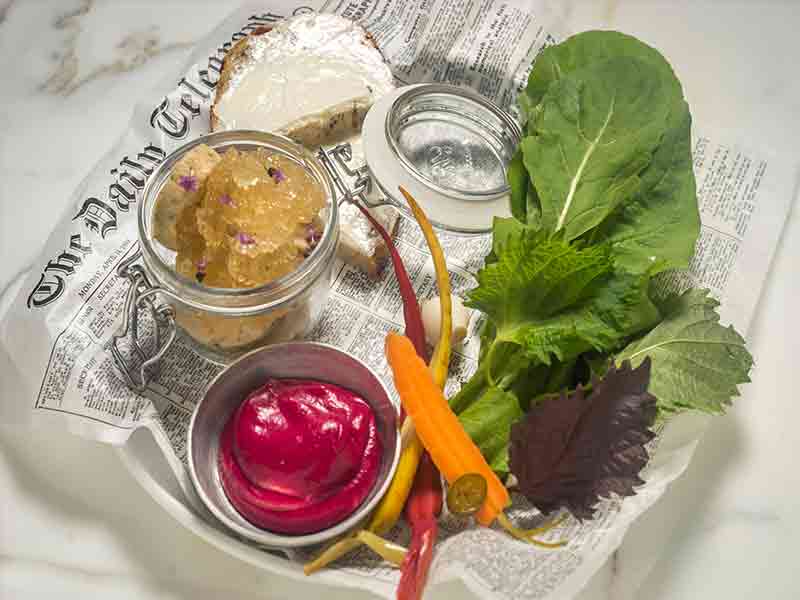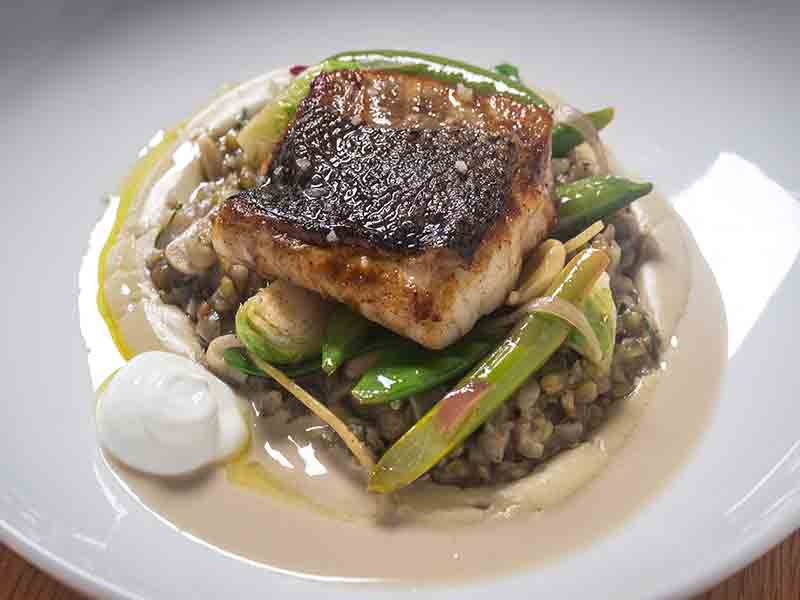Nearly 10 years ago, I honeymooned in Japan, where my husband and I marvelled less at this grand new stage of our lives, and more at the incredible presentation of the food (not to mention the prices).
We spent hours in the basements of department stores ogling displays of red bean desserts glistening like jewels, and days extolling the virtues of an impeccable egg sandwich from the Kyoto bus station (oh the yellowness of the yolk!) We also spent more dollars than we then understood at restaurants where course after course was brought to our table as if we were being presented with works of art: foaming volcanoes of champagne sorbets, vinegar apricots perched upon radiant raw slugs, fish flash-fried to look like they were actively swimming on a slate slab decorated to look like a 3D aquarium.
READ: TOO SOON TO MOURN THE JEWISH DELI’S DEMISE
Sure, thanks to my squeamish and kosher-style tastes, it was all basically inedible, but the aesthetics! Why can’t they make Jewish food look this way? I kept asking. Why is my Ashkenazi cuisine always presented in balls and slop piles? Imagine, I kept bugging my newly betrothed, being served gefilte fish in tiny egg-like spheres on cubes of horseradish with topiary carrots – the purple kind.
Well, imagine no longer. This past summer, in my current home of New York City – a metropolis known worldwide for its delis and smoked fish shmears, its blintzes and bialys – I was thrown into entirely new roads in Jewish dining, bearing culinary witness to new twists on European and middle eastern delicacies. Including, yes, gefilte shrimp.
It began one humid morning as I was walking through one of my local pop-up foodie markets, meandering among stalls serving everything from Beijing street food to high concept marshmallows. Suddenly, in front of me, a yellow sign with funky font spelling out: Matzah Brei. Wait, what? It had been shocking enough to see this dish, which I’d been sure was the sole invention of my grandparents, on diner menus during Passover and year-round at historic delis like Barney Greengrass (delish, by the way).
At this new eponymous outfit, matzah brei was not thrown on a plate and served flat or scrambled with a side of applesauce, but used as the wrap for sandwiches – tightly wound, rainbow, filled with avocado, fresh mango salsa and cheddar-jack cheese. I ordered the gooey “Monica,” a brei pocket stuffed with sautéed mushrooms and spinach, fresh sliced mozzarella and honey Dijon, and messily slurped it up as I walked home in neo-nostalgic delight.
It was merely weeks later that I found myself at the Russ & Daughters annual “Herring Pairing.” The very word herring drips with Yiddish spit, but this was not your Bubbie’s herring. Russ & Daughters is an “appetizing shop” that has served Manhattan customers for over 100 years (and before that, out of a herring barrel and pushcart.) In the past few years, they’ve spearheaded a Jewish food renaissance, opening several cafés with a modernizing menu that includes “A Bissel of Caviar,” sardines served with avocado mousse, and the “Super Heebster,” a toasted bagel with whitefish, baked salmon salad wasabi-infused fish roe and horseradish dill cream cheese. Perhaps some of their most extreme modernizing has been to their founding item, herring, turning it from jar food to fine design.
The Herring Pairing was held in a space usually reserved for wine tastings; it featured a jazz band playing hip versions of Ma l’cha Hayam and a funky photo booth. There, we were served eight kinds of herrings – Instagram-worthy concoctions. The Scandinavian-style mustard and dill herring shone bright yellow and was perched neatly on dark crispbread; a buttery New Catch Holland full-fish glistened inside a freshly baked brioche; a guest chef treated us to herring tostadas, adorned with a bouquet of shaved baby heirloom carrots, white onion and watercress. And of course, there were alcohol pairings, including Aquavit mules and martinis. All of this was topped by a welcome goodie bag of brightly coloured Swedish fish.
READ: THE LIFE OF A KOSHER FOODIE
As if I hadn’t gained enough summer weight, I decided to come full circle and surprise my husband by celebrating our anniversary at Nur, one of Manhattan’s hottest new dining rooms. A small, white, minimalist yet cozy spot, Nur is partly owned by Gadi Peleg, the founder of Breads, a nouveau New York institution that has leavened over the past few years to include a chain of bakeries across town. Breads bakes exceptional Nutella-based chocolate babka and shaksuka pastry (to name just a few), but at a new crop of restaurants – including Nur – middle eastern and Israeli street and traditional foods are transformed to fine dining.

The menu at Nur comprises the aforementioned gefilte shrimp alongside Palestinian tartare (beef, smoked eggplant cream, baby artichokes, yogurt and tahini) and Yemenite bread with schug. My husband and I shared, first, the Damascus Qatayef, a crispy Syrian pancake filled with lamb, that was sweet and tender like petit fours, perfectly crescent shaped, followed by a sleek shot-glass chaser of yogurt with herbs. We split dishes including a geometrically arranged raw fluke, and a layered sea bass plate that included spring greens verdant like Post-Impressionist gardens.
But most transporting, perhaps, was the New Middle East dessert, an aluminum bowl filled with a brightly splattered, Jackson Pollock-like concoction of semolina, mascarpone, citrus compote, yogurt crumble, sumac meringue and blood orange sorbet.
I am utterly full of food, I thought, as I left the restaurant. But boy was I thirsty. Now if only some hip barista would open a kogel mogel bar.










